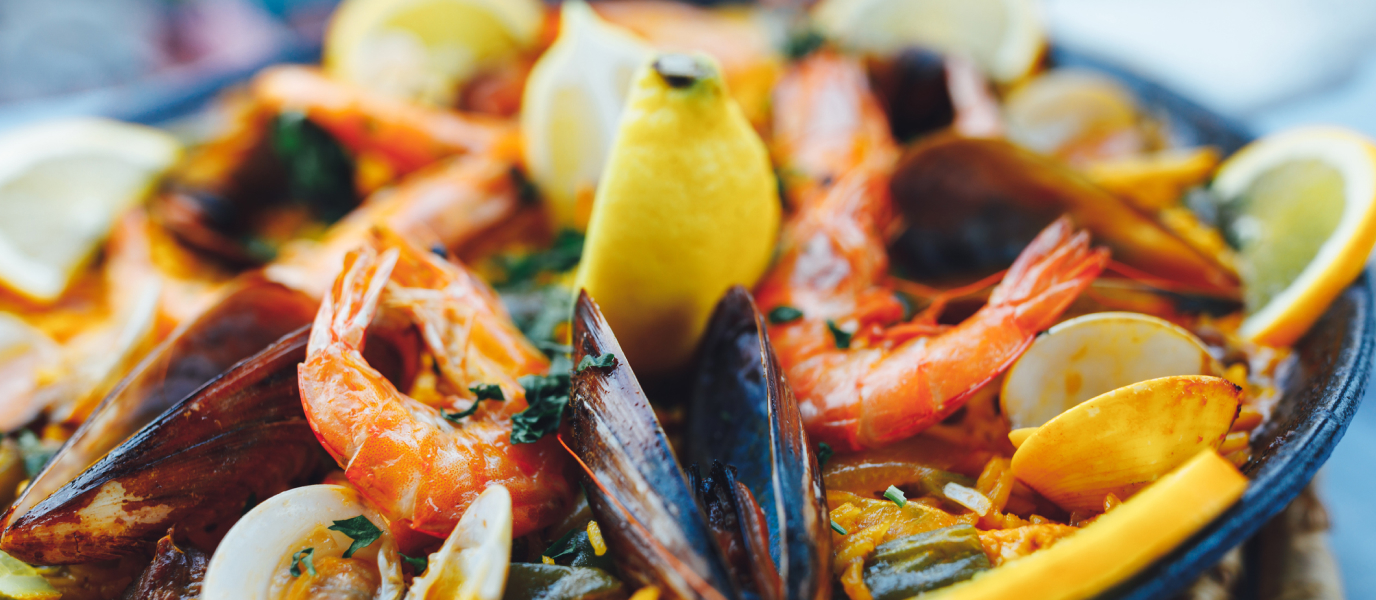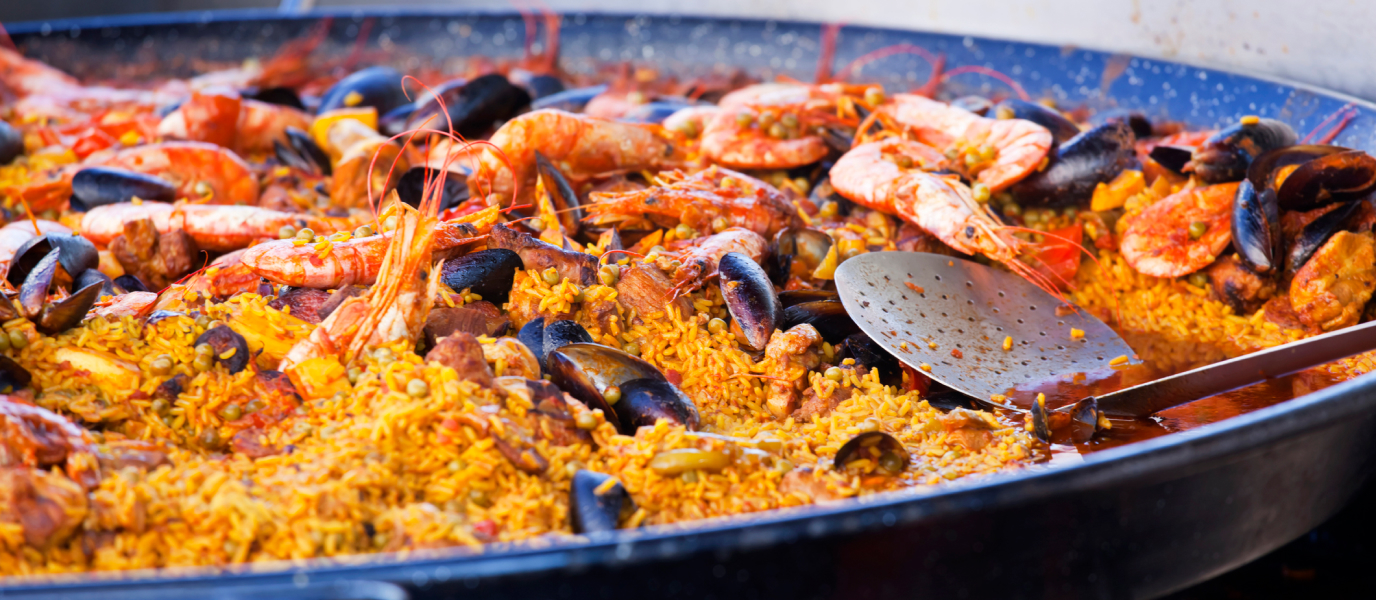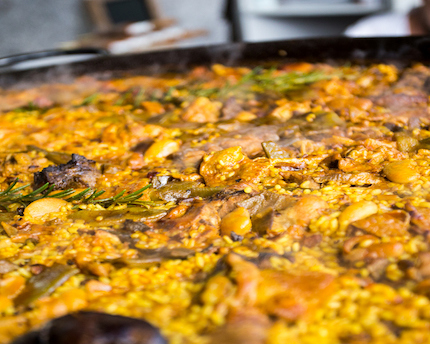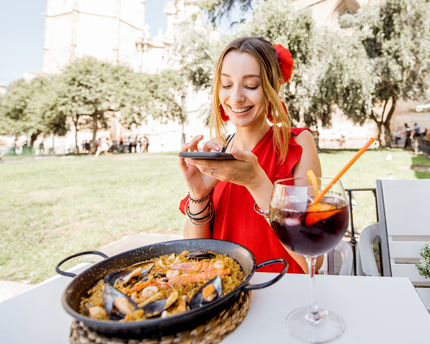There are many traditional Valencian rice dishes. Although most visitors to the city search the restaurant menus for the famous paella (vincular a URL correspondiente), the fact is that the culinary possibilities afforded by rice are almost infinite. Everything depends on the creativity of the cook and the tastes and preferences of each guest.
Nevertheless, some rice dishes are more popular than others. Examples of the most successful are arroz negro [black rice] and arroz a banda [rice cooked in fish stock], although there are many others. Below, we describe some of these, and explain why they are so popular—in the top restaurants of the city itself and in those of the entire region.
Arroz con bogavante [Rice with lobster]
Arroz con bogavante [rice with lobster] is, with apologies to paella, the star of rice dishes along the entire length of Spain’s coastline—and not just in the Levante region. And although this dish originated on Spain’s Atlantic coast, the fact is that it features on the menus of many of Valencia’s restaurants.
The key to a successful execution of this dish is the quality of the lobster (lobster from the Atlantic is best), and that of the shrimps or prawns whose heads are used to make the fumet [fish stock].
It can be served ‘dry’ (as most rice dishes are), or in a broth. A broth is best prepared in a clay pot, rather than the pan normally used for cooking paella. The best rice to use in preparing a dry rice with lobster dish is Bomba rice. For a rice dish cooked in a broth, however, it is better to opt for a long-grain variety, as this absorbs less of the cooking liquid.
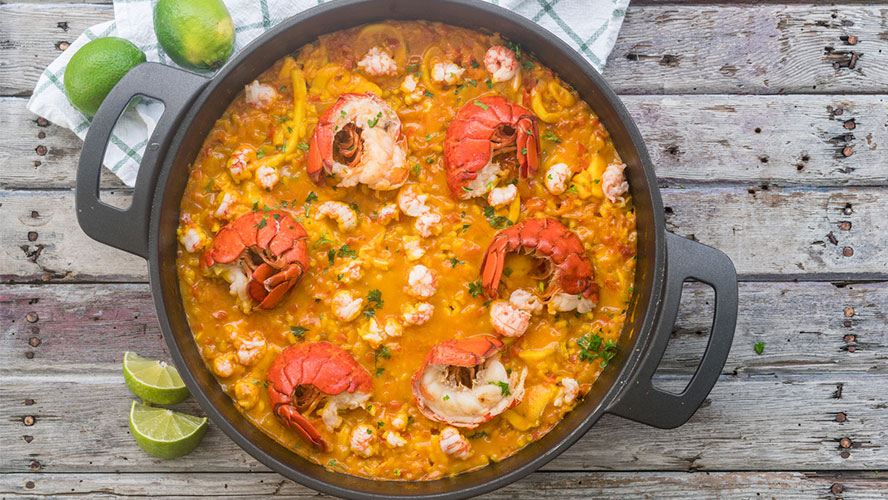
Arroz negro [Black rice]
Arroz negro [black rice] is, without a shadow of a doubt, one of the most delicious Valencian rice dishes. It has an intense flavour and striking appearance as a result of the squid ink added during its preparation. Normally, no other seafood is added. However, unlike most other typical Valencian rice recipes, arroz negro does require the addition of sautéed onion.
Depending on the region (arroz negro is more commonly eaten in Castellón and Alicante than in Valencia itself), it is served at the table in the paella pan in which it was cooked. It is accompanied by a small bowl of alioli (an emulsion of olive oil, garlic and salt), the flavour of which provides a perfect complement to the rice cooked in ink.
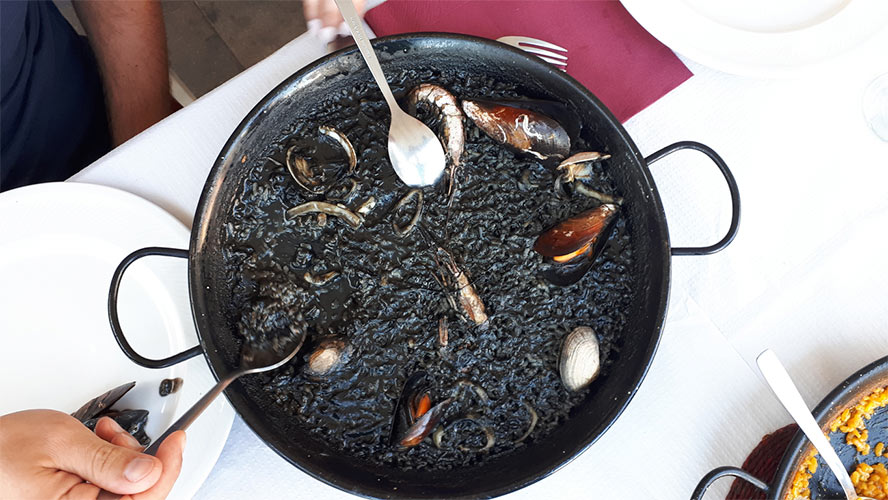
Arroz a banda [Rice cooked in fish stock]
Although this traditional rice dish originated in the province of Alicante, its popularity has spread along the whole of the Mediterranean coastal area. From Murcia to Catalonia, taking in the three provinces of the Valencia Autonomous Region.
This dish has an indisputable seafaring origin: to make it, the fishermen used the “de morralla” [low-quality] catch. In other words, the fish which, due to its unattractive appearance, or its large amount of bones, were difficult to sell on the fish markets.
The main point to note about arroz a banda is that it is not one dish, but two. On the one hand, there is the fish stock (or seafood stock in the recipe’s more sophisticated versions), in which the potatoes are cooked, and which is served in the manner of a typical Mediterranean stew.
This stock is also used to cook the rice itself, which is served at the table accompanied by a good alioli.
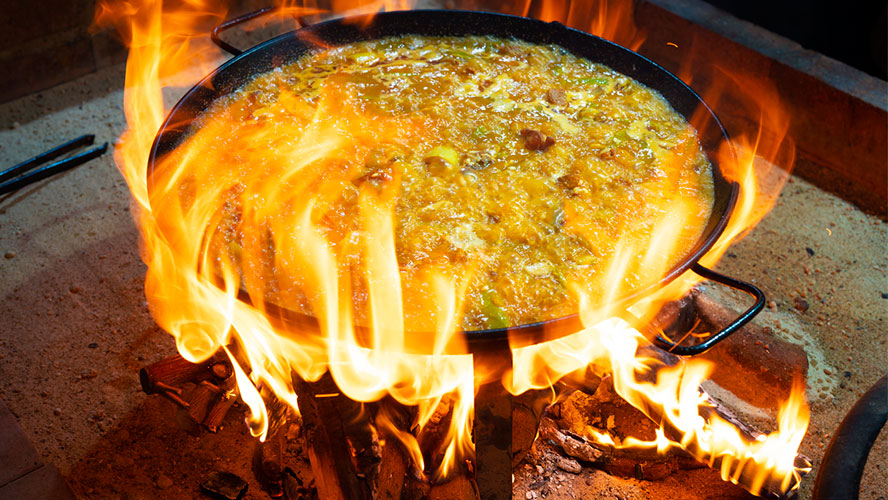
Arroz con costra [Rice with a crust]
This is another typical Valencian dish that originated in the province of Alicante. Like many of the region’s rice dishes, it owes more to peasant cooking than to the seafaring tradition. In fact, the star ingredient of this recipe is normally a rabbit.
The dish is cooked in a clay pot in the oven, preferably a wood-fired oven. When it is cooked, the surface is coated in beaten egg and the cooking is finished off using a costrera. This is simply a type of metal lid which has been heated on the hob; when brought into contact with the egg, it quickly solidifies it and gives it an attractive, toasted appearance, which also tastes delicious.
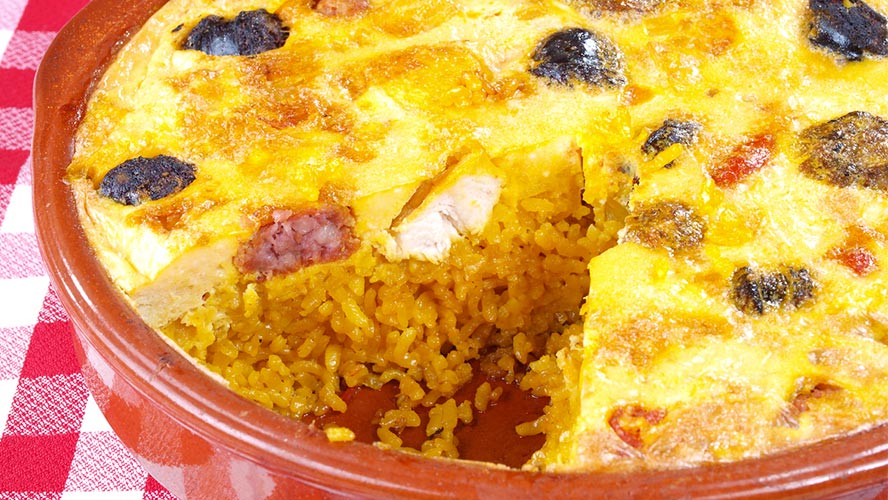
Arroz al horno [Baked rice]
Arroz al horno [baked rice] is also cooked in a clay pot in the oven. This dish is a good example of frugal cooking, as it is made from the left-overs from the stew. So, along with the rice, this dish contains chickpeas, chorizo, black pudding, and the strange pelota (a type of meatball made with minced meat left over from the stew, mixed with breadcrumbs, garlic and parsley).
In many parts of the Valencia region, this dish is called cassola, after the pot (or casserole) in which it is cooked. It is also known as rossejat.
Arroz del senyoret (or Arroz del señorito) [Young Gentleman’s Rice]
The key to this traditional Valencian rice dish is that all the ingredients must have been peeled or shelled (in the case of the seafood and shellfish), the fish must be free of bones, and if rabbit or chicken are included, they too must be free of bones and gristle. This means that the ‘young gentleman’ can eat it easily and without a care and, most importantly, he won’t get his hands stained.
The origin of this dish is thought to lie with Alicante’s wealthiest classes at the beginning of the twentieth century. In many restaurants and homes, it is also known as arroz ciego [blind rice].
Fideuá de marisco [Seafood noodles]
Although the various versions of fideuá are not really rice dishes, their preparation method has much in common with that of typical Valencian rice dishes. Their advantage over the many versions of paella is that they take far less time to cook, given that the noodles absorb the stock (fumet) much faster. And, of course, they attain the desired texture much more quickly: the pasta must remain firm enough not to detract from the texture of the other ingredients.
This was another dish invented by fishermen, and originally (like arroz a banda), it was based on the left-over fish that was difficult to sell at the market. Now, however, it is considered a true delicacy. And, of course, it is a real treat to enjoy the flavour of noodles soaked in the juices of the seafood that goes into it.




































































